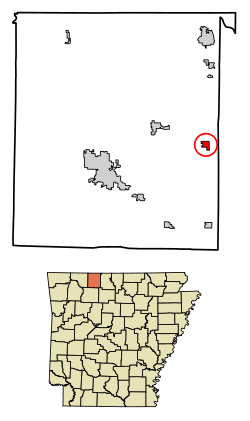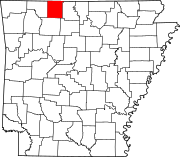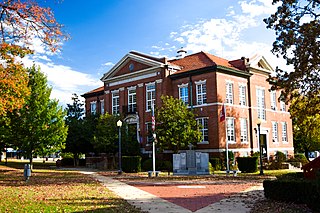
Boone County is located in the U.S. state of Arkansas, along the Missouri border. As of the 2020 census, the population was 37,373. The county seat is Harrison. It is Arkansas's 62nd county, formed on April 9, 1869.

Morehouse Parish is a parish located in the U.S. state of Louisiana. As of the 2020 census, the population was 25,629. The parish seat is Bastrop. The parish was formed in 1844.

Alpena is a town in Boone and Carroll counties in the U.S. state of Arkansas. The population was 374 at the 2020 census.

Bellefonte is a town in Boone County, Arkansas, United States. The population was 530 at the 2010 census. It is part of the Harrison Micropolitan Statistical Area. Bellefonte gained national attention in 2013 when the city's mayor, James Wiggs, was recognized as the oldest active mayor in the United States at 90 years of age.

Bergman is a town in Boone County, Arkansas, United States. The population was 439 at the 2010 census. It is part of the Harrison Micropolitan Statistical Area.
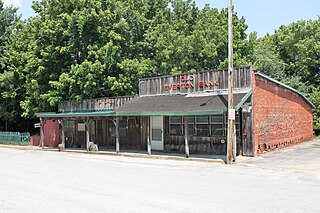
Everton is a town in Boone County, Arkansas, United States. The population was 133 at the 2010 census. It is part of the Harrison Micropolitan Statistical Area.

Lead Hill is a town in Boone County, Arkansas, United States. The population was 271 at the 2010 census. It is part of the Harrison Micropolitan Statistical Area.

South Lead Hill is a town in Boone County, Arkansas, United States. The population was 102 at the 2010 census. It is part of the Harrison Micropolitan Statistical Area.

Valley Springs is a town in Boone County, Arkansas, United States. The population was 175 at the 2010 census. It is part of the Harrison Micropolitan Statistical Area.

Monticello is a college town in, and the county seat of, Drew County, Arkansas. As of the 2010 census it had a population of 9,467. Founded in 1849 in the Arkansas Timberlands near the Arkansas Delta region, the city has long been a commercial, cultural and educational hub for southeast Arkansas. With a historically agriculture- and silviculture-based economy, it has diversified to include growth from the medical sector and the University of Arkansas at Monticello.
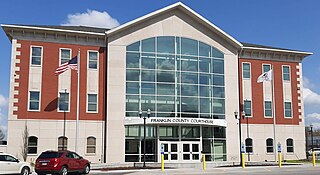
Benton is a city in and the county seat of Franklin County, Illinois. The population was 6,709 at the 2020 census. In 1839, Franklin County was split roughly in half and the county seat was permanently fixed "at a hill at the south end of Rowling's Prairie", the site of the future city of Benton. Benton's namesake is Missouri senator Thomas Hart Benton. The village of Benton was organized in 1841 on 20 acres (8.1 ha) of property donated by John Ewing and Walter S. Akin. In 1902, the village became a city, and incorporated under the mayor/commissioner form of government.

Howell is the largest city and county seat of Livingston County, Michigan. As of the 2020 census, the city had a population of 10,068. The city is mostly surrounded by Howell Township, but the two are administered autonomously. Howell is part of the South Lyon–Howell–Brighton Urban Area, which is an extension of the larger Detroit–Warren–Dearborn Metropolitan Statistical Area.

Williamston is a town and the county seat of Martin County, North Carolina, United States. The population was 5,248 at the 2020 census. It is located in North Carolina's Inner Banks region. The closest major city is Greenville, approximately 28 miles (45 km) to the southwest.

Devol is a town in Cotton County, Oklahoma, United States. The population was 151 at the 2010 census, an increase of 0.7 percent from 150 at the 2000 census. The town is named for J. Fiske Devol, who owned the land on which it stands.
Dixonville is an unincorporated community in Indiana County, Pennsylvania, United States. The area is recorded as the "Dicksonville" census-designated place (CDP), with a population of 467 at the 2010 census. The CDP lies mostly on the western edge of Green Township, though a small portion extends west into Rayne Township.

Pulaski is a city in and the county seat of Giles County, which is located on the central-southern border of Tennessee, United States. The population was 8,397 at the 2020 census. It was named after Casimir Pulaski, a noted Polish-born general on the Patriot side in the American Revolutionary War.

Crab Orchard is a census-designated place (CDP) in Raleigh County, West Virginia, United States. The population was 2,678 at the 2010 census.
The grand wizard is the national leader of several different Ku Klux Klan organizations in the United States and abroad.

Thomas Robb is an American white supremacist, Ku Klux Klan Grand Wizard and Christian Identity pastor. He is the National Director of the Knights Party, also known as the Knights of the Ku Klux Klan, taking control of the organization since the year 1989.

The Harrison Micropolitan Statistical Area, as defined by the United States Census Bureau, is an area consisting of two counties in the U.S. state of Arkansas, anchored by the city of Harrison.

